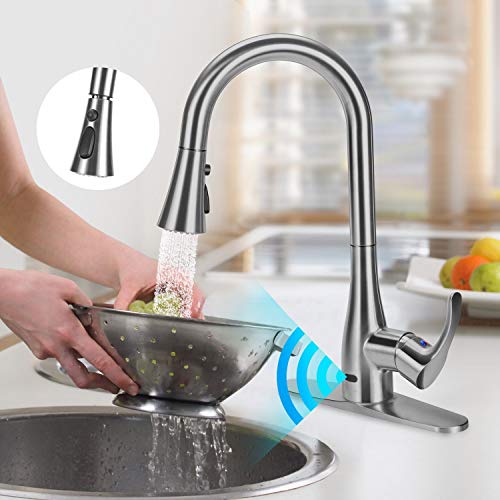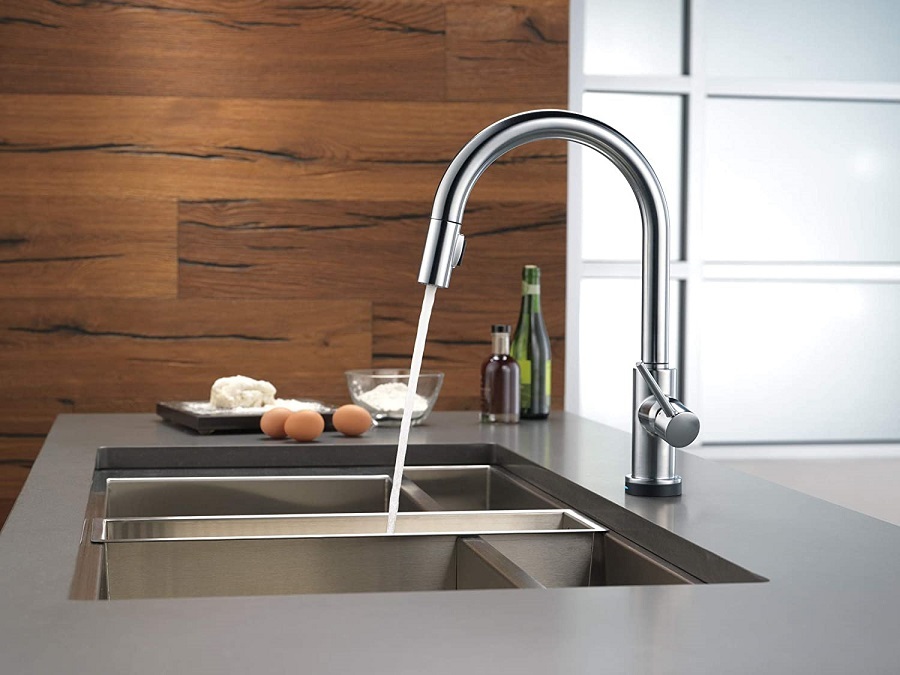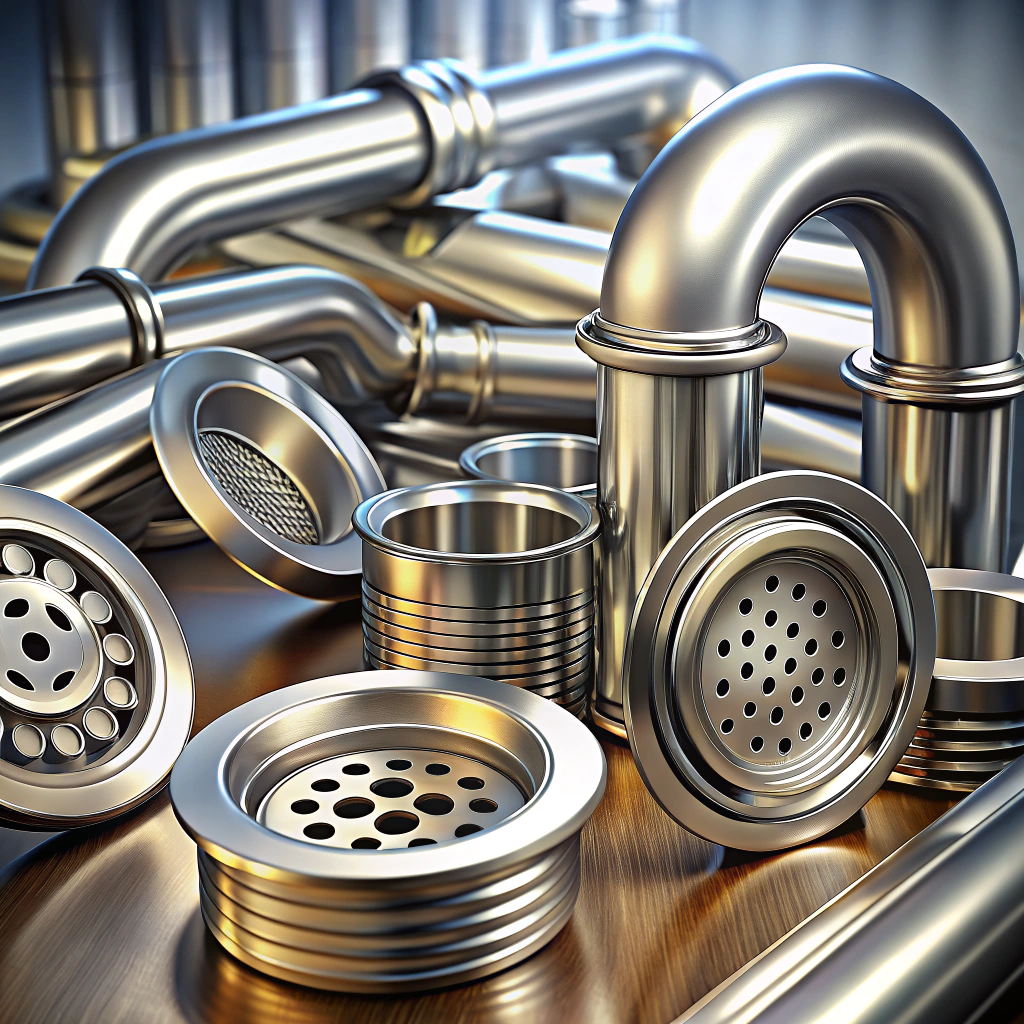Last updated on
What do you choose? Smart, touch-on, or touchless kitchen faucet? All of them are innovative and all of them have their pros and cons.
Kitchen faucets have come a long way over the years. Older models used to be cold and utilitarian, but now, there are many creative and innovative options. For older homes, it is still possible to find a touch faucet, and these are generally the most affordable option. If you don’t like the idea of physically touching your faucet to turn the water on and off, a touchless faucet is a great option. Recently, there has been a surge of smart faucets, and these are convenient for many reasons, not the least of which is the fact that you can control them with your smartphone.
Let’s look at the differences and similarities of these trending kitchen faucets as well as their pros and cons against the traditional counterparts. The technology is very similar and the key difference is in the set of features.
We usually include shopping links that earn us a commission at no expense to you. These links help us provide you with examples.
What's Inside
What is the Difference Between a Smart, Touch, and Touchless Faucet?
Touchless faucets detect when someone is near (i.e. a wave of a hand) and responds to physical touch as well. Touchless faucets are beneficial because they consume less water than traditional ones. Traditional faucets have handles (touchless have the manual option too) that use a human’s energy, which may lead to the user getting tired after using for long periods of time.
The difference between the two types of kitchen faucets is that touch-sensitive (a.k.a. touch-on) kitchen appliances respond to one’s physical touch while touchless kitchen fixtures detect when somebody is near. Kitchen sinks do not turn off automatically as they did before because people often forget about them and leave the water running. Touch and touchless faucets have that feature allowing it to turn off the water after a certain amount of time.
Touchless faucets have more sensors and can sense the motion of a hand beforehand, which is why they switch on with just a wave in their direction. Touchless faucets are also used for any liquid outside of water, unlike touch faucets which will not work properly if hands are dirty or greasy.
Meanwhile, smart faucets are also touchless faucets. They work much the same but have a whole set of new features. For example, they can be controlled by voice (using a home assistant, such as Alexa or Google Home). They also have scheduling features, improved water temperature control, better water-saving features, and so on. As a smart device, this type of faucet can also be controlled with your phone.
How Do Touch On Faucets Work?

Check Out the Top 10 Touch On Kitchen Faucets
Touch-sensitive faucets contain a sensor filled with both electric and capacitive properties. This sensor, however, only activates when a touch is detected for less than five seconds.
Pros and Cons of a Touch On Sink Faucet
Touch-sensitive faucets use less water, which helps the environment and for people who are paying more money per cubic meter.
A touch-sensitive faucet can help prevent grime and germ from spreading in the kitchen because you do not have to touch the faucets.
A touch-sensitive faucet is easier to use than a traditional faucet, and it can save you money over time. These are more expensive options, but implementation is delicate and should be done by professionals. Touch taps often reduce the risk of accidental scalding with children or seniors from complex hot water body configurations because they have less chance of reaching extreme temperature levels.
Touch-sensitive faucets are easy to use, and there’s no need to touch the sink top even with your elbows, palms, or any other part of your body because it is possible to use it just by one touch. This means the faucet will stay cleaner for a long time.
The touch sensitivity helps for a long time because it never dims nor goes out so the faucet will always look new owing to its durability and strength in reality.
It is safe for kids and does not require dirty hands as people do not have to touch the faucet.
If there is water-saving enabled, they would have succeeded in their mission thanks to this touch-sensitive faucet as these modern types are using less water than traditional ones. This amounts to savings quite significantly on a long-term basis, saving a large amount of water every day while you need to work with them or wash dishes all day long.
The main disadvantage of a touch faucet is its price. Sensors are more expensive to buy, and they also have batteries (or other power supply) that require replacement. Furthermore, these sensors can break easily if improperly installed by the user or hit by hard objects, such as cooking utensils. Therefore, it may be more economical overall to use a traditional-style faucet unless you plan on being in the kitchen for long periods of time; otherwise, you will have to keep repairing or replacing the touch sensor with great frequency in order for it to work properly again.
Additionally, because there are no standards yet regulating what types of materials should be used in making touch sensors (which could include copper), which means that their prices will likely continue increasing over time due to decreased worldwide supply rather than other factors like fluctuations in copper prices on the market right now.
How Do Touchless Faucets Work?

Check Out the Top 10 Touchless Kitchen Faucets
The infrared sensor that is used by touchless faucets comes in a close range of about 5 inches. Once your hand enters this distance, the infrared light bounces off of your hand and into the detector.
Pros and Cons of a Touchless Sink Faucet
The system containing a touchless faucet is designed to be water-saving and responsible for the environment. Also financially beneficial for homeowners. Touchless faucets are more environmentally conscious than typical sink faucets since they minimize water flow and prevent leakage, often saving homeowners a lot of money.
A touchless faucet may be preferable to a touch-type faucet because they are completely touch-free. Whether using a touch-on or a touchless faucet, it is not insisted that you wash your hands before handling the device.
The other benefit is that it’s easier for people who have trouble handling a traditional faucet. Although there are some negatives, touchless faucets are more convenient than standard faucets because there is no need to use your own hands, and they also save water plus time–both valuable needs in today’s society.
The Touchless faucet is a modern invention that helps eradicate any bacteria on the faucet or in one’s hands from dirty contact. This is done by eliminating the need for the physical human touch in order to turn off, on, or control water pressure. The difference in this product rather than a regular tap is that there no longer will be any unnecessary contact with germs and prevent getting sick when washing our hands after working outside, such as mowing the lawn, gardening, or biking.
Though prices are typically an unexpected cost for some consumers, most can find more affordable options. What is lost in price typically translates to something else, such as speed of automation or accuracy of sanitation programs set into motion. This automatic device does all the work, so all you have to do is turn up the pressure with a simple handle movement without touching anything.
When you wave your hand in front of the faucet and when water comes out at starting flow rate is low, it increases over time, so you have more time to get dishes closer to the faucet. In terms of convenience touchless faucet is better because, with a touch-sensitive faucet, you must touch or press down on it for the water flow to start. Still, with a touchless one, all that’s needed for operation are arm movements and waving hands around.
This type of faucet suits adults and people who have physical challenges, such as those with arthritis, etc. People also like this type for smaller kitchen spaces where there isn’t much space available.
A touchless faucet does not have to be touched for it to come on, but any objects that are moved or passed through the front of the faucet will cause it to turn on inadvertently. This can happen with children and pets and result in increased water consumption, which is less efficient than a faucet.
The touchless faucet can sometimes have a problem of running out of battery. This would lead to the sensor not working and the problems in operation with the faucet. It increases the cost to maintain it because you have to change frequently for a high-priced 1-year battery life span but this type of touchless, on increasing convenience, currently justifies that price.
Misconceptions About Touch and Touchless Faucets
Are touch and touchless faucets reliable? There’s a misconception that touchless technology may not be reliable (water turning on and off by its self). The long-term use of these faucets has proved this not to be the case.
Are touchless faucets are more difficult to install in comparison with normal faucets. Boxes containing the finishing touch-free faucet have a detailed installation guide that provides instructions for installing the faucet and what tools are needed. The fact that you’ve installed any previous type of faucet means you won’t have any difficulty installing the touchless one.
A motion sensor only turns on the water. A motion sensor faucet is used to control the flow of water without any physical contact. It works on a person’s touch near the sensor, which activates movement detectors that turn on to allow the water to flow from the spout. These sensors are so advanced that they can sense an individual waving their hand in front of it and also, for instance, prevent accidents or spills by then turning off automatically as if nothing had happened.
A misconception about touchless faucets is that they waste water. However, in reality, the sensor only works if there is hand motion and stops pouring once there is no more motion. This means that touchless faucets save a lot of water than regular faucets. Touchless faucets don’t waste any more water than ordinary ones because their sensors stop working when the motion has stopped.
The Pros and Cons of a Smart Faucet

Check Out the Top 10 Smart Kitchen Faucets
Smart faucets help you get the water at just the right temperature every time you turn it on. They have sensors that activate and deactivate the water flow so that hands never touch potentially dirty and germ-filled knobs. They can also be activated by voice.
The first smart faucets were what we now call touchless, having been a part of public bathrooms for several decades now. These faucets that contain sensors which turn on the flow of water when they detect movement (i.e., someone washing their hands), then turning off once your hands have been removed.
Digital faucets are a technological innovation to the world of sinks. They show you your desired water temperature and were first designed as an add-on, but now many companies produce full units that include this component.
An automated electronic faucet that decreases the amount of water used and heated by automatically shutting off the flow after a designated period. It shuts off water consumption automatically after a pre-determined time frame, which saves you as much as 50% on your monthly water bills.
Smart faucets preheat (cool down) the water to your exact specifications before the faucet even turns on, which drastically reduces the amount of water that gets wasted and increases efficiency. This can be a hugely valuable tool in the long run, and owners of smart faucets say they pay for themselves within only one month.
A recent study showed that kitchen sinks could contain twice as many germs as the average phone. This is because two moist environments which come in contact with human skin are what they thrive in. Installing a Smart Faucet can help reduce the spread of germs and help fight off any sickness fast if there is one around. Although it may be less expensive to make your own non-smart faucet, it is still just as important to have one installed for safety reasons and health benefits.
Smart faucets may not be in as much demand as other smart home devices have been, but they’re still a useful addition to the home to help you save up on money for your water.




